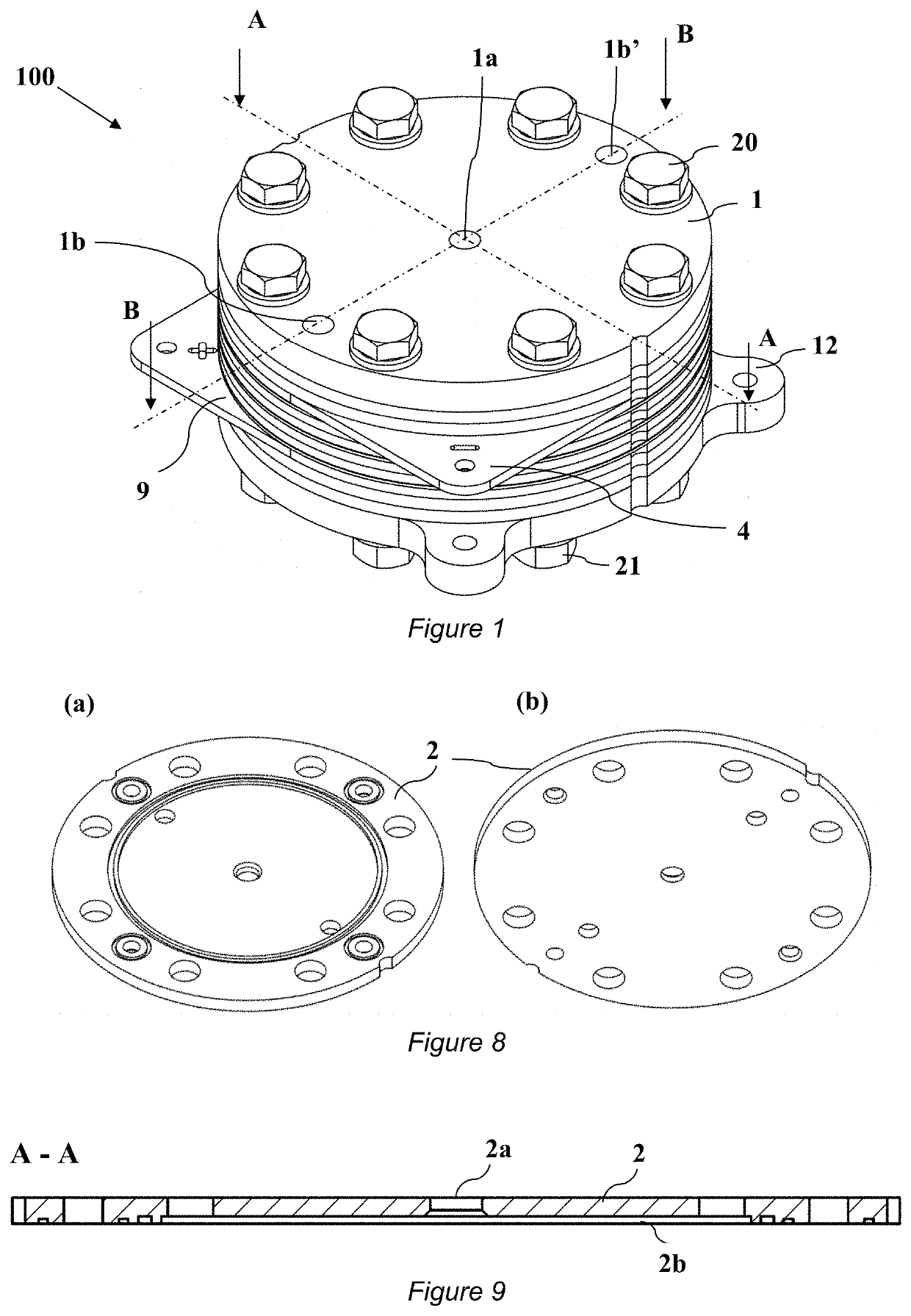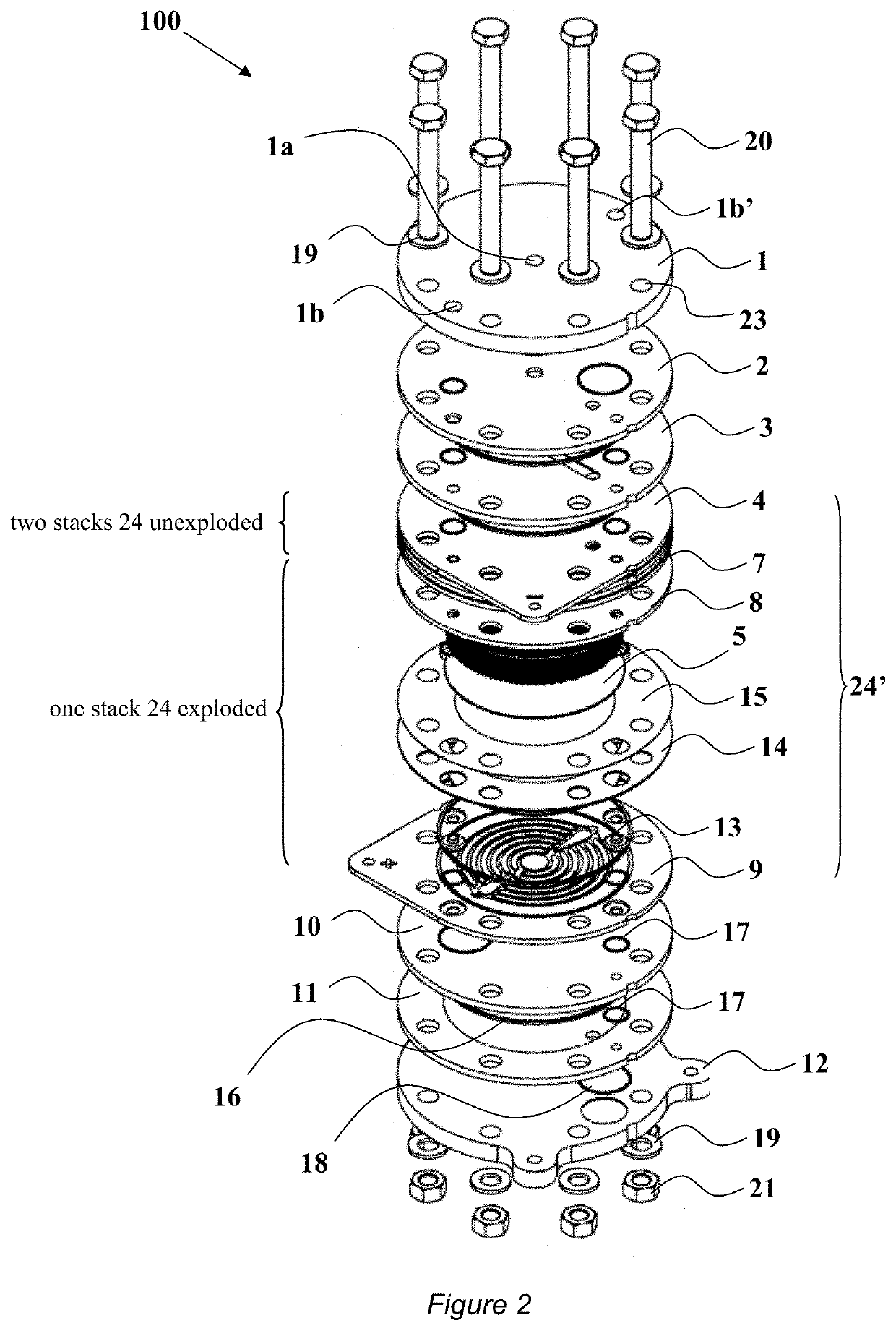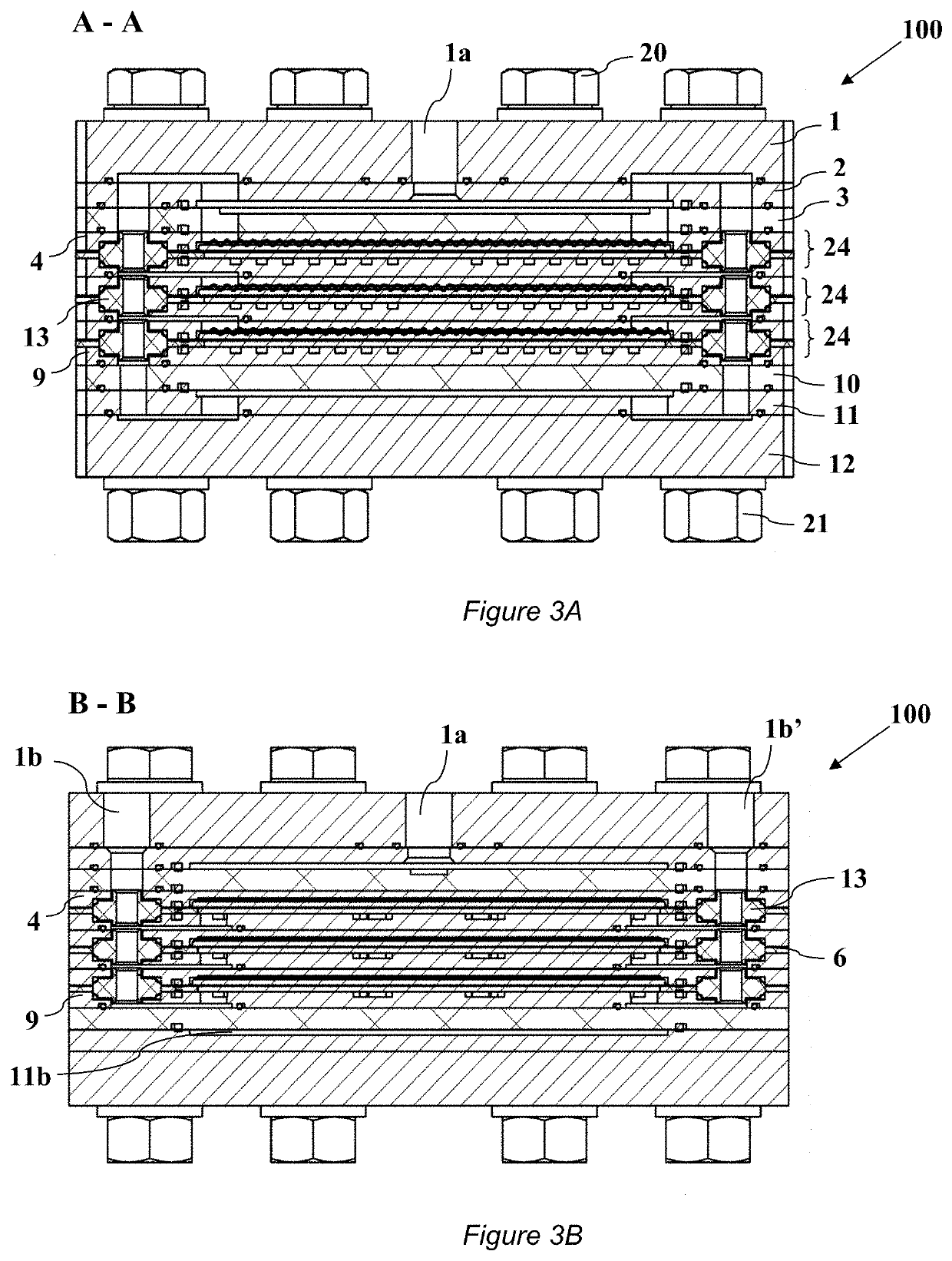Modular electrolyzer unit to generate gaseous hydrogen at high pressure and with high purity
a gaseous hydrogen, high-purity technology, applied in the direction of electrolysis components, electrolysis processes, cells, etc., can solve the problems of cumbersome solutions, no purity level, no pressure of gaseous hydrogen produced, etc., to prevent cell deformation, stable cell resistance, and avoid the effect of reducing the contact area
- Summary
- Abstract
- Description
- Claims
- Application Information
AI Technical Summary
Benefits of technology
Problems solved by technology
Method used
Image
Examples
Embodiment Construction
[0040]FIGS. 1 to 3 illustrate an exemplary embodiment of an electrolyzer (electrochemical) unit 100 according the invention used to generate gaseous hydrogen at high pressures and with high purities via the electrolysis of water introduced into said unit 100. In particular, FIG. 1 is the perspective view of the unit 100, while FIG. 2 and FIGS. 3A and 3B are a partial exploded view, a cross-sectional elevation taken along the A-A line and another cross-sectional elevation taken along the B-B line of said electrolyzer unit 100, respectively, shown in FIG. 1. For further reference, the cross-sectional elevation of FIG. 3A reveals the H2 transport channel structure within the unit 100, while the cross-sectional elevation of FIG. 3B shows the water / O2 transport channel structure. Furthermore, in FIGS. 1 to 3, for the sake of simplicity and clarity, an embodiment of the electrolyzer unit 100 comprising three electrolyzing cells 24 arranged adjacent to (on top of) one another and in fluid / ...
PUM
| Property | Measurement | Unit |
|---|---|---|
| pressure | aaaaa | aaaaa |
| pressures | aaaaa | aaaaa |
| pressures | aaaaa | aaaaa |
Abstract
Description
Claims
Application Information
 Login to View More
Login to View More - R&D
- Intellectual Property
- Life Sciences
- Materials
- Tech Scout
- Unparalleled Data Quality
- Higher Quality Content
- 60% Fewer Hallucinations
Browse by: Latest US Patents, China's latest patents, Technical Efficacy Thesaurus, Application Domain, Technology Topic, Popular Technical Reports.
© 2025 PatSnap. All rights reserved.Legal|Privacy policy|Modern Slavery Act Transparency Statement|Sitemap|About US| Contact US: help@patsnap.com



